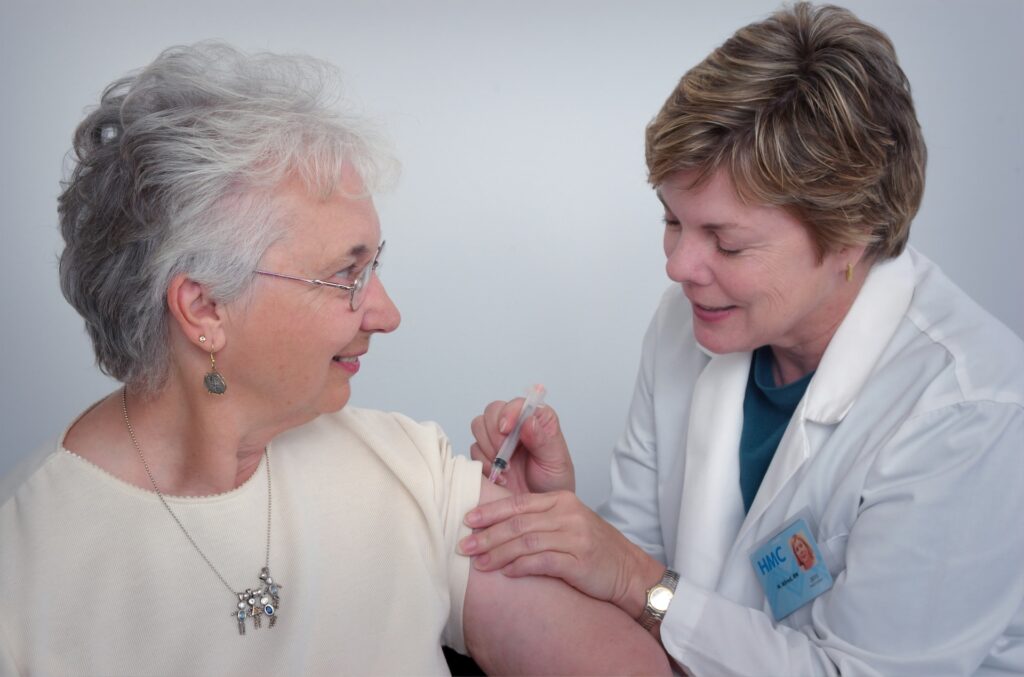
Introduction
“From reproductive health to disease prevention and management, the significance of women’s healthcare cannot be overstated in ensuring women live healthy and fulfilling lives.”
“When it comes to healthcare, all women should have equal access to the same quality of care. Access to quality women’s healthcare is crucial for women’s health and well-being.
Unfortunately, many women face barriers to accessing healthcare, such as cost, lack of insurance, and limited availability of healthcare providers. However, many resources are available to help women overcome these barriers and get the necessary care. We can improve women’s health and quality of life by prioritizing women’s healthcare.
Women’s healthcare is a critical component of the overall healthcare system. It encompasses a range of medical services and procedures specifically designed to address the unique healthcare needs of women throughout their lifespans.
Preventive Services
Women’s healthcare includes preventive services, such as breast and cervical cancer screenings, and reproductive health services, such as family planning and maternity care. It also includes treatment and management of conditions that disproportionately affect women, such as osteoporosis, menopause, and certain types of cancer.
Comprehensive and Equitable Healthcare Services
The healthcare system must provide comprehensive and equitable healthcare services to all individuals, including women. Access to women’s healthcare services can be affected by various factors such as socioeconomic status, cultural and language barriers, and geographic location. Thus, healthcare policies and programs must ensure women can access quality healthcare services that meet their unique needs.
The Unique Healthcare Needs Of Women
Furthermore, healthcare providers must be trained to address the unique healthcare needs of women, and women should be empowered to take an active role in managing their health and well-being. This may involve educating women on healthy lifestyle choices, promoting regular check-ups and screenings, and ensuring they are well-informed about their healthcare options.
Overall, women’s healthcare is an essential component of the healthcare system that must be prioritized to promote the health and well-being of women and their families.
Women’s healthcare is a crucial aspect of overall health and well-being. Women face unique health challenges throughout their lives, and access to quality healthcare is essential to address these challenges effectively. Preventive care, reproductive health, and mental health are critical areas of women’s healthcare, requiring attention and support.
From Adolescence To Menopause
A branch of medicine that focuses on the unique health needs of women from adolescence to menopause and beyond. Women’s healthcare aims to promote and maintain the health and well-being of women, prevent diseases, and manage conditions that affect women’s health. Women’s healthcare encompasses various services, including preventive care, reproductive health, and treatment for gynecological and other health and mental conditions.
Regular Check-ups, Screenings and Exams
Women’s healthcare is essential for women of all ages. Regular check-ups, screenings, and exams can help detect health problems early when they are most treatable. Women’s healthcare providers offer various services, including breast exams, Pap tests, mammograms, and pelvic exams. They can also provide guidance and support for issues related to contraception, fertility, pregnancy, and menopause.
Preventive Care
Preventive care is an essential component of women’s healthcare. Regular check-ups, screenings, and vaccinations can help prevent or catch illnesses and diseases early when they are most treatable. Women should receive screenings for normal breast and cervical cancer and sexually transmitted infections (STIs). They should also receive routine vaccinations, such as the HPV and flu, to protect against preventable diseases.
Reproductive Health
Reproductive health is another critical area of women’s healthcare. Women need access to comprehensive reproductive healthcare, including contraception, prenatal care, and maternity care. Access to safe and legal abortion services is also essential for women’s reproductive health. Women should have the right to decide about their bodies and reproductive health without interference from politicians or others who seek to limit their choices.
Mental Health
Mental health is a vital component of overall health and well-being, and women are more likely than men to experience mental health issues such as depression and anxiety. Women should have access to mental health services that are affordable and culturally competent. Mental health services should be integrated into primary care settings to ensure that women receive the care they need when they need it.

Access to Women's Healthcare
Access to healthcare is a fundamental human right, but women often face barriers to accessing quality healthcare services. These barriers can prevent women from receiving the care they need to maintain their health and well-being. This section will explore some barriers women face when accessing healthcare and some solutions for improving access.
Barriers to Access
Many barriers can prevent women from accessing healthcare services. Some of the most common barriers include:
- Financial barriers: Women may be unable to afford healthcare services, especially if uninsured or underinsured.
- Geographic barriers: Women who live in rural areas may not have access to healthcare services due to a lack of healthcare providers or facilities in their area.
- Cultural barriers: Some women may not seek healthcare services due to cultural beliefs or stigmas surrounding certain health issues.
- Language barriers: Women who do not speak the language of the healthcare provider may struggle to communicate their healthcare needs.
- Transportation barriers: Women who do not have reliable transportation may struggle to get to healthcare appointments.
Solutions for Improved Access
There are many solutions for improving access to healthcare services for women. Some of the most effective solutions include:
- Expanding access to Medicaid: Expanding access to Medicaid can help more women afford healthcare services.
- Increasing funding for community health centers: Community health centers can provide healthcare services to women who live in areas with a shortage of healthcare providers.
- Providing language services: Healthcare providers can provide language services to women who do not speak the provider’s language.
- Increasing public transportation options: Increasing public transportation options can help women who do not have reliable transportation get to healthcare appointments.
- Addressing cultural barriers: Healthcare providers can work to address cultural barriers by providing culturally sensitive care and education.
By addressing these barriers and implementing solutions, we can improve access to healthcare services for women and ensure that they receive the care they need to maintain their health and well-being.

Women’s healthcare is a complex and multifaceted field that is constantly evolving. While significant progress has been made in recent years, many challenges must be addressed to ensure that women receive the best possible care. This section will explore current issues in women’s healthcare, including health disparities, policy changes, and technological advancements.
Health Disparities
One of the most pressing issues in women’s healthcare is the existence of health disparities. Women from certain racial and ethnic groups and those living in poverty or uninsured are likelier to experience poor health outcomes.
For example, black women are more likely to die from breast cancer than white women, and Hispanic women are more likely to experience complications during childbirth.
Addressing these disparities requires a multifaceted approach that includes improving access to care, addressing social determinants of health, and increasing awareness among healthcare providers.
Policy Changes
Another important issue in women’s healthcare is the ongoing debate over policy changes. For example, there is currently a heated debate over access to reproductive healthcare services, including contraception and abortion.
Some policymakers push for increased restrictions on these services, while others advocate for greater access. Additionally, there are ongoing discussions about the role of Medicaid and other safety net programs in providing healthcare to uninsured or underinsured women.
Technological Advancements
Finally, technological advancements also play an increasingly important role in women’s healthcare. For example, new screening technologies make detecting breast cancer and other earlier-stage diseases easier.
Additionally, telemedicine is making it easier for women in rural areas or those who have difficulty traveling to access healthcare services. However, there are also concerns about the potential for new technologies to exacerbate existing health disparities or to be used in ways that violate women’s privacy or autonomy.

Women's Healthcare Providers
Women’s healthcare providers are essential in helping women maintain optimal health. These providers include a range of medical professionals, each with unique training and expertise. Understanding the different types of providers, their training and education, and the patient-provider relationship is key to receiving high-quality care.
Types of Providers
Women may receive healthcare services from a variety of providers, including:
- Obstetricians/gynecologists (OB/GYNs)
- Primary care physicians (PCPs)
- Midwives
- Women’s health nurse practitioners (WHNPs)
- Physician assistants (PAs)
Healthcare Services
OB/GYNs are doctors who specialize in women’s reproductive health, including pregnancy, childbirth, and menopause. They are trained to perform surgeries, such as hysterectomies and C-sections, and can diagnose and treat a wide range of conditions, including sexually transmitted infections (STIs) and gynecological cancers.
PCPs are trained to provide comprehensive, ongoing care for patients of all ages and genders. They may provide routine gynecological care, such as Pap tests and breast exams, and refer patients to specialists if needed.
Midwives
Midwives are healthcare professionals specializing in providing care during pregnancy, childbirth, and postpartum. They may work in hospital birth centers or provide care in the home setting.
WHNPs and PAs are healthcare providers who specialize in women’s health. They can provide routine gynecological care, diagnose and treat common conditions, and prescribe medications.
Training and Education
Each type of women’s healthcare provider has unique training and educational requirements. OB/GYNs, for example, complete four years of medical school, followed by a four-year residency in obstetrics and gynecology. PCPs, on the other hand, may complete a three-year residency in family medicine or internal medicine.
Midwives may complete a bachelor’s or master’s degree in midwifery and hold a nursing degree. WHNPs and PAs typically complete a master’s degree in their respective fields.
Patient-Provider Relationships
The patient-provider relationship is an important aspect of women’s healthcare. Patients should feel comfortable discussing their health concerns and asking questions about their care. Providers should listen carefully to their patients, explain diagnoses and treatment options clearly, and involve patients in decisions about their care.
Good communication, mutual respect, and trust are key components of a successful patient-provider relationship.

As technology advances and medical research progresses, the future of women’s healthcare looks promising. There are several areas where progress is being made, including research and development, patient empowerment, and global impact.
Research and Development
Medical research and technology advancements are leading to new treatments and therapies for women’s health issues. Researchers are studying female anatomy and physiology to understand better how to diagnose and treat conditions specific to women. For example, the development of personalized medicine allows doctors to tailor treatments to individual patients based on their unique genetic makeup and other factors.
Additionally, big data and artificial intelligence are helping researchers analyze vast amounts of information to identify patterns and develop new treatments. For example, researchers are using machine learning algorithms to analyze mammograms and identify early signs of breast cancer.
Patient Healthcare Empowerment
Women are becoming more empowered to take control of their healthcare. With the rise of digital health tools and apps, women can access more information and resources. These tools allow women to track their health data, communicate with their doctors remotely, and access educational resources on various health topics.
Furthermore, patient-centered care is becoming more common in the healthcare industry. This approach focuses on the patient, considering their unique needs, preferences, and values. This approach empowers women to participate actively in their healthcare decisions and work collaboratively with their healthcare providers to achieve the best possible outcomes.
Global Impact
Women’s healthcare is not just a local issue but a global one. Many organizations are working to improve women’s health outcomes around the world. For example, the World Health Organization is working to improve maternal and child health, reduce the spread of sexually transmitted infections, and promote gender equality in healthcare.
Additionally, many initiatives focus on improving access to healthcare in developing countries. For example, the United Nations Population Fund is working to provide family planning services and maternal healthcare to women in developing countries.
Overall, the future of women’s healthcare is bright. With continued research and development, patient empowerment, and global initiatives, women worldwide will have access to better healthcare and improved health outcomes.
Conclusion
Women’s health is an important topic of conversation that should not be overlooked. Women must prioritize their health to maintain their overall well-being and quality of life. By understanding the various health risks and challenges women face, individuals and healthcare organizations can work together to ensure that women receive the best possible care. Ultimately, women’s health is a fundamental part of our society, and we must continue to prioritize it to improve our world’s overall health.
Share via:

